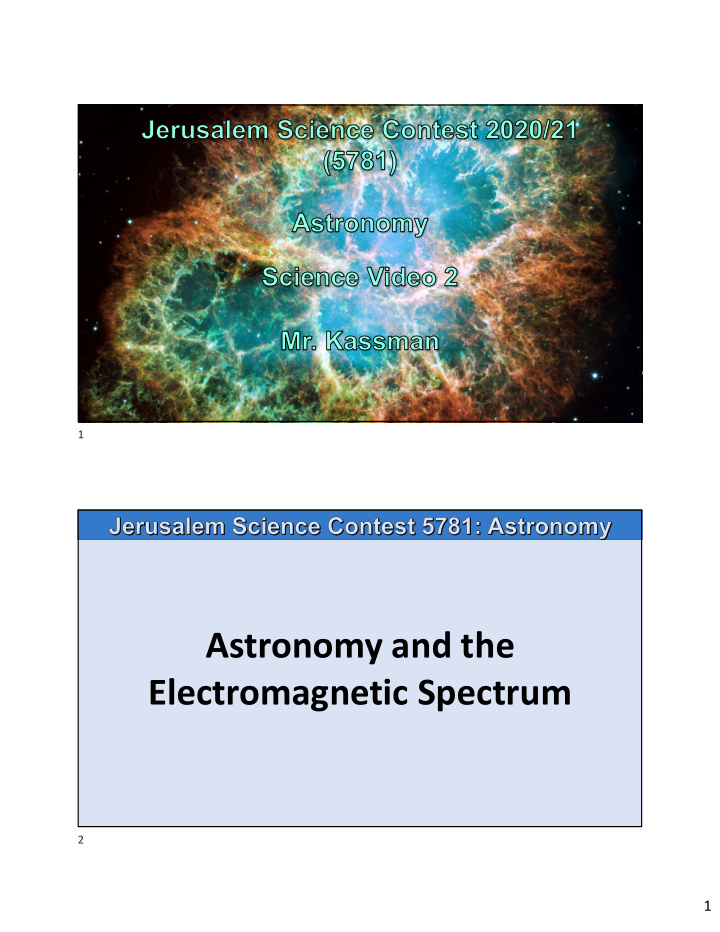



1 Astronomy and the Electromagnetic Spectrum 2 1
Telescopes 3 Electromagnetic Waves 4 2
Electromagnetic Spectrum 5 6 3
7 8 4
Wavelength: 9 10 5
Frequency: (Video credit: NASA) 11 wavelength × frequency = speed For EM waves, speed = 3 × 10 8 m/s = 300,000 km/s • 12 6
wavelength × frequency = speed speed wavelength = frequency • Wavelength and frequency are inversely proportional, as one grows, the other shrinks. • Also, the energy of the wave is proportional to the frequency → higher frequency, higher energy 13 (Video credit: NASA) 14 7
15 16 8
17 18 9
• Frequency of EM waves from space primarily depend on the temperature of an object. • Frequency is doppler shifted depending on whether object is moving towards or away from us, and how fast. 19 20 10
• Frequency of EM waves from space primarily depend on the temperature of an object. • Also, different frequencies can tell us about different processes. • For Example: UV and visible from electron transitions in atoms infrared from vibrations of molecules x-rays and gamma rays from high energy electrons in magnetic fields 21 22 11
23 Astronomy and the Electromagnetic Spectrum Multiwavelength Astronomy 24 12
25 The Crab Nebula 26 13
Hubble Space Telescope 27 The Crab Nebula (Hubble Telescope) 28 14
Atomic Emission Spectrum 29 Oxygen 30 15
Sulfur 31 The Crab Nebula (Hubble Telescope) 32 16
X-Ray Image (Chandra) 33 Neutron Star 34 17
X-Ray Image (Chandra) 35 36 18
Infrared Image 37 Visible Image 38 19
Radio Image 39 Ultraviolet Image 40 20
The Crab Nebula (Multiwavelength Composite Image) 41 42 21
Recommend
More recommend